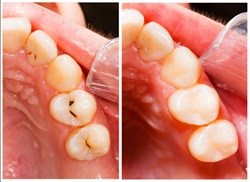
Subscribe & Follow
#AfricaMonth
In the news
Glass-ionomers fillings not inferior to silver amalgam

This has challenged the supremacy of silver amalgams in dentistry and the widely held believe that these amalgams make better and more lasting tooth fillings than high viscosity glass-ionomers.
Experts have for decades spoken out against dentists' choice to use glass-ionomers instead of silver amalgam or composite resin materials for load bearing posterior tooth restorations. However, their beliefs have been based on clinical evidence that, when closely examined, holds little scientific weight.
In an effort to appraise the current clinical evidence regarding the merits of placing glass-ionomers as tooth restorations, the SYSTEM Initiative has conducted a systematic review of randomised control trials and a meta-epidemiological study.
Systematic review
The systematic review included a literature search in 17 global and regional databases and databases for open access journals and 'grey' literature. Besides searching the global databases PubMed/Medline and the Cochrane Library, the additional regional English databases searched comprised of the scientific dental literature from Africa, Europe, India and North America, whilst regional non-English databases comprised of the dental literature from China and Latin-speaking American countries.
In total, 38 trials were accepted as evidence, comprising the investigation of more than 10 000 placed tooth restorations. The outcome shows that new generation, high-viscosity glass-ionomers cannot be regarded as inferior to amalgam, since no overall statistically significant difference was found in the clinical failure rate between load bearing high viscosity glass-ionomers and amalgam restorations after follow-up periods ranging from one to six years.
Mickenautsch says, "The results of the meta-epidemiological study show that statements concerning glass-ionomers' inferiority to amalgam and other types of materials are based on incorrect statistical comparison methods. Such methods include the still common naïve-indirect comparison of restoration failure rates from uncontrolled clinical longitudinal studies."
"The traditional argument against the use of glass-ionomers in modern dentistry is based on the wrong assumption that results from unrelated clinical trials with differing clinical settings and patient groups can be directly compared to one another. Instead, statements concerning the merits of clinical interventions should rest on the direct comparison of competing treatment options via randomised control trials."
More patient friendly
High-viscosity glass-ionomer restorations do not require provision of macro-retention by high-speed drilling, thus they offer the dental profession a more patient friendly approach for placing tooth restorations. Placing glass-ionomer restorations also reduces the likelihood of a repeated restoration cycle, because repair of failed restorations does not require the removal of remaining filling material from the tooth cavity.
The new findings suggest that placing high-viscosity glass-ionomer restorations may offer an alternative to placing restorations with silver amalgam in load bearing posterior cavities of permanent teeth.








